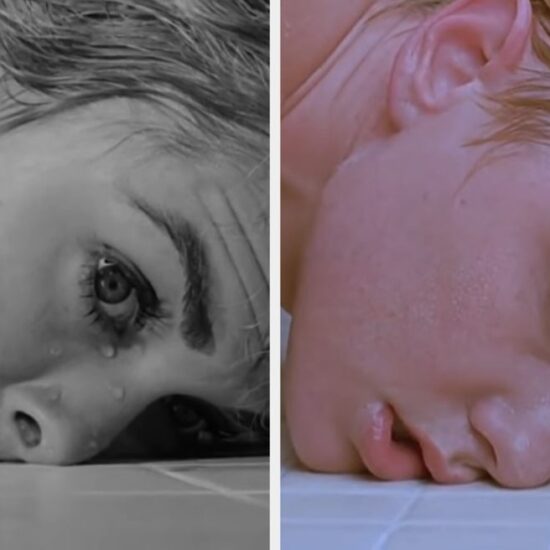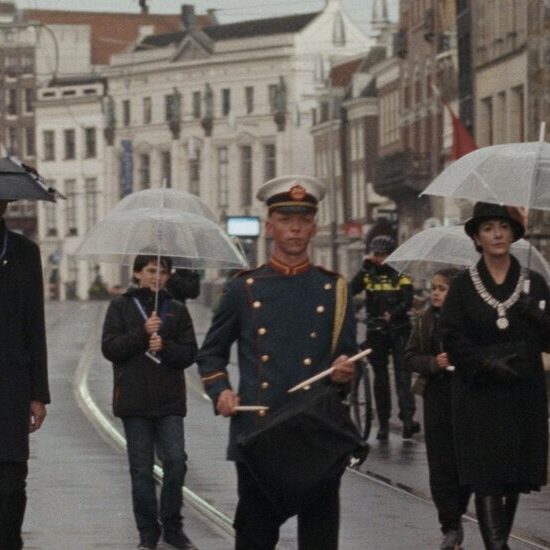
In the opening scene of Stephanie Rothman’s 1971 film “The Velvet Vampire,” a damsel in distress is jumped outside an art gallery by a man in a motorcycle jacket.
It’s dark and she’s alone. Diane LeFanu (Celeste Yarnall) appears entirely helpless, until she calmly dispatches the would-be rapist with a switchblade. She then washes the blood off her hands in a nearby fountain; this lady in red can take care of herself. Cut to a blues musician singing a tragic, heartfelt lament entitled “Evil-Hearted Woman.”
Evil, like beauty, is in the eye of the beholder, and Rothman’s exploitation-cinema classic — which screens Saturday at the TIFF Bell Lightbox — is a movie styled lavishly as a Rorschach test. Whether you see Yarnall’s bloodsucker as a villainess or a victim, or an anti-heroine peddling sexual liberation, is a matter of perspective, and the same ambiguity applies to the film as a whole.
Is “The Velvet Vampire” a dreamy, hypnotic homage to Gothic mythology or an academic deconstruction of its clichés? Is it a shameless soft-core romp featuring gratuitous nudity or a multi-faceted study of desire? Is it art or is it trash?
“My view was that it was not a clash but, rather, that it was interesting to see those things combined,” said Rothman, now 85, by telephone from Los Angeles. “How fascinating! Why did these things all have to be in separate categories or separate boxes? Why can’t they blend into something new?”
Rothman, who will do a virtual Q&A after TIFF’s screening, is articulate about the nature of her artistry, and unsentimentally perceptive about the premature curtailment of her career. The same self-awareness that once made her an outlier in a crass field remains; if she has a directorial legacy, it’s as an artist who was, both to her credit and to her detriment, ahead of the curve.
When she directed “The Velvet Vampire,” she was 35 years old, the first woman to ever be awarded the Directors Guild of America’s fellowship. As a film student at the University of Southern California, she’d been inspired by the art films of Ingmar Bergman and Jean Cocteau (whose dreamlike theatricality is visible in “The Velvet Vampire”); after graduation, she was singled out by the legendary B-movie impresario Roger Corman, who hired her as his assistant and gave her myriad production responsibilities on a series of low-budget efforts.
In 1970, Corman backed Rothman’s breakthrough feature “The Student Nurses” (1970), about the romantic and professional adventures of four young women studying to become caregivers. Well-cast and shrewdly directed, “The Student Nurses” earned strong box office while savvily splitting the difference between sleaze and sociology, incorporating a boldly matter-of-fact abortion subplot that shamed the mainstream competition.
The film’s delicate balancing act between pandering and confrontation carried over into “The Velvet Vampire,” which was commissioned to cash in on the early ’70s vogue for vampire films kick-started in the U.K. by Hammer studios.
“Exploitation films were the area in which I could work,” said Rothman, who bristled against being pigeonholed but also saw the writing on the wall. “What I tried to do was make the films my own, which is to say, not as copies of what was thought as normal within the genre, but rather to refresh it and make something new.”
To prepare for “The Velvet Vampire,” Rothman and her co-writer, Charles S. Swartz (who also happened to be her husband), immersed themselves in vampire lore. “I knew that they could be terrifying creatures,” Rothman said, “but in terms of movies, there was always an underlying eroticism. The vampire has female victims, who usually swooned, and it was like ecstasy when it happened. I decided that to refresh the genre, I would make the vampire a woman and she would be a seductive woman, and that would be part of her power.”
Diane LeFanu, whose surname references Irish writer Sheridan Le Fanu, a forerunner of Bram Stoker whose 1872 novella “Carmilla” featured a distaff bloodsucker, is a marvellous creation. Decadently cadaverous in her crimson ensembles, she cuts a striking figure, never more so than in a beautiful shot of her splayed over her late husband’s coffin. Her master plan to lure a pretty young couple to her secluded desert estate marks her as a kind of supernatural swinger, but despite her psychic and physical predations toward her freeloading house guests — both of whom seem happy to be in her thrall and in her bed — Diane is also a tragic outsider.
The final scenes, which pit our velvety anti-heroine against an angry mob clutching crosses, feel not so subtly politicized as allegory for misogyny, or homophobia or xenophobia; in the end, she’s like a scapegoat for the primal desires she stirs up in the people around her.
It’s possible to see the character’s persecution as an act of artistic self-portraiture for the filmmaker. Despite Corman’s support, Rothman was fighting an uphill battle, not only against the institutional sexism of the filmmaking industry but against the snobbishness of critics. At a moment when the concept of auteurism was making young male directors into household names, Roth’s intelligence and intentionality didn’t win her many defenders. Critics were hesitant to recognize her personal stylistic signature in works like “Velvet Vampire.”
“The reviewer for the Los Angeles Times said that the film was unintentionally funny. I just threw my hands up, like ‘What can I say?’ He came in with a point of view and the film didn’t satisfy that point of view. So he said it was unintentionally funny, but as far as the visual aspects of the film — which he thought were in many cases very lovely — he attributed them all to the cameraman,” Rothman said.
The same beguiling, seriocomic tone that makes “The Velvet Vampire” so singular made it difficult to market and, after directing a few more features — including 1973’s two-fisted thriller “Terminal Island,” about an offshore island housing violent, exiled criminals — Rothman gradually receded from the business.
“People coming from many different directions, and with different values, all ask me the same thing: ‘Why didn’t you go on making films?’ I stopped because I couldn’t get work. I didn’t want to go on making more exploitation films; I wanted to make things that were different and there was no interest in that. In some cases, they just didn’t want a woman director and, in other cases, the people I wanted to see and make my case to didn’t want to meet me.”
Rothman says that the first time she was aware of any late-breaking admiration for her work was the 1979 Toronto Festival of Festivals, forerunner of TIFF, where “The Velvet Vampire” was programmed by the late Robin Wood as part of a horror section called “The American Nightmare.”
In the 21st century, though, her films have undergone a wider critical appraisal. There’s a new book by writer and scholar Alicia Kozma, called “The Cinema of Stephanie Roth: Radical Acts of Filmmaking”; there are streaming engagements on the Criterion Channel and screenings at cinematheques around the world.
“My films are in the archive at MoMA (Museum of Modern Art) now and, in July, they screened ‘The Velvet Vampire’ on a beautiful new print that had been restored. They said it was the second largest audience they’d had this year, which was very nice to hear. It was quite a turn, this wonderful reception given me by the audience and by the museum. I’m happy that when I’m gone, my films will have a home.”
JOIN THE CONVERSATION













